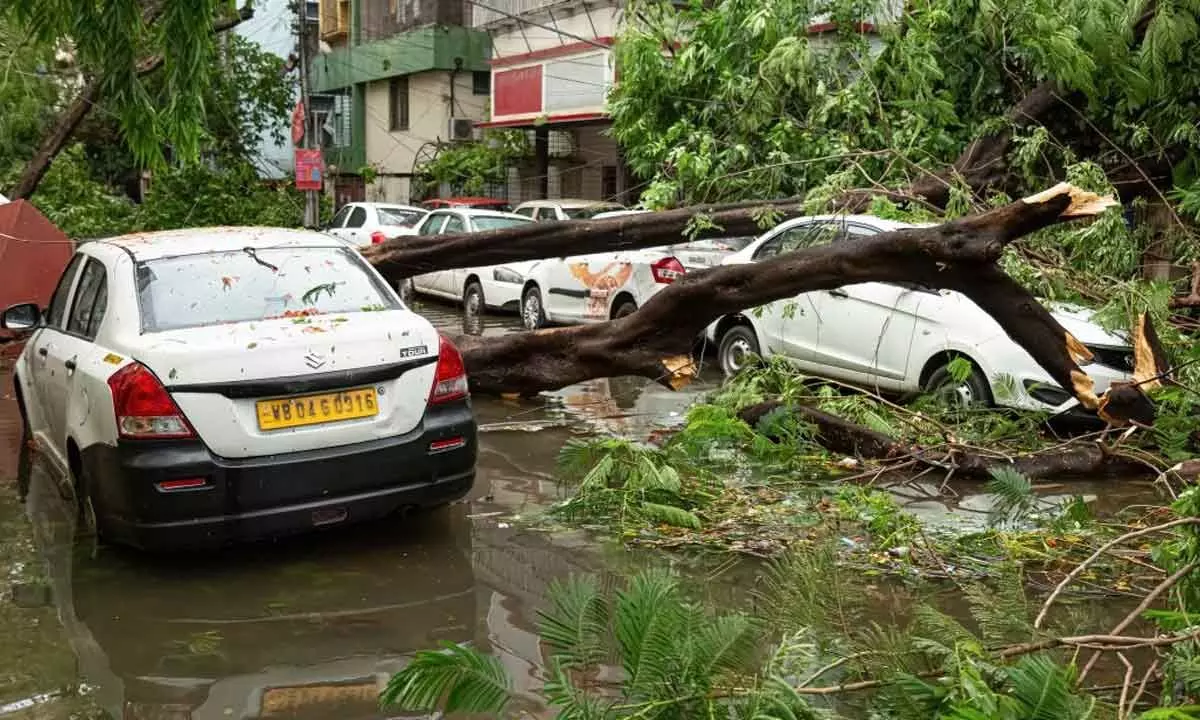India must climate-proof healthcare facilities against intensifying floods, cyclones: CEEW

- Only six out of 36 states & UTs in India have outlined strategies to climate-proof infrastructure
- CEEW has developed a district-level risk assessment framework to climate-proof India’s critical infrastructure
Many of the over two lakh public healthcare facilities in India could be at risk from extreme climate events such as heavy flooding and severe cyclones, according to a new independent study by the Council on Energy, Environment and Water (CEEW). This underscores the critical and urgent need to climate-proof the country’s healthcare infrastructure. CEEW’s study presents a scalable climate risk assessment framework for India’s healthcare infrastructure. It quantifies risks geospatially and identifies key drivers such as exposure to climate hazards and vulnerabilities, empowering states to strategically prioritise investments. This is important since only six out of 36 states and UTs in India had outlined strategies to climate-proof critical infrastructure in their state climate action plans or disaster management plans, as of December 2023. The study uses Maharashtra, with its high vulnerability to climate disasters, as a pilot case to demonstrate the framework.
The CEEW study finds that nearly one-third of healthcare facilities in Maharashtra are likely to experience high risk from floods and/or cyclones by 2050, driven by the increasing frequency and intensity of extreme climate events. During these events, healthcare facilities could suffer from interruptions in crucial services such as the power and water supply, damaged access roads, and broken communication networks, severely hindering the delivery of essential services. These challenges also create significant barriers for healthcare providers, making it difficult to offer timely and adequate care to affected populations. The study finds that over 11 per cent of healthcare facilities in Maharashtra are currently at high risk from extreme floods and cyclones and require immediate action. The at-risk facilities are concentrated in districts such as Mumbai Suburban, Nagpur, and Raigad. On the other hand, districts like Mumbai, Pune, and Sindhudurg stand out for having high adaptive capacity, with higher annual expenditures on healthcare systemic strengthening under the National Health Mission.
Vulnerable facilities across India must build their resilience by undertaking physical risk assessment, developing preparedness plans that are tailored to address the asset level risk, conducting regular structural audits of healthcare facilities, and investing in training and capacity-building programmes for their healthcare workforce. Further, increased investments in the operation and maintenance of facilities can improve overall functional efficiency. This can reduce the likelihood of service disruption during extreme climate events.
Dr Vishwas Chitale, Senior Programme Lead, CEEW, said, “India has already embarked on making healthcare infrastructure climate-resilient. For example, after the 2018 floods, the Kerala state government, in collaboration with WHO, initiated a risk analysis exercise of 1,300 primary health centres with plans to climate-proof 300 critical facilities by 2025. Similarly, Maharashtra’s revised State Action Plan on Climate Change and Human Health (SAPCCHH) for 2022-2027 also outlines a comprehensive roadmap to tackle climate-induced health risks. With nearly INR 10,000 crore proposed in the Interim Budget 2024-25 to improve Maharashtra’s healthcare facilities, safeguarding this investment from disaster-induced losses is crucial to ensure long-term benefits.”
Shreya Wadhwan, Programme Associate, CEEW, said, “Healthcare facilities across India must undertake immediate actions and invest in long-term planning based on their climate risk profile. Strengthening resilience would also require revisiting the national guidelines on healthcare infrastructure to focus more on adaptation. This requires district health departments to assess and address vulnerabilities more locally. Expanding standards like the Indian Public Health Standards (IPHS) to incorporate resilience metrics such as structural audits, emergency preparedness plans, infrastructure reinforcement against climate risks, and climate-proofing upgrades is essential to these ends.”
The CEEW study makes several other key recommendations, including revising the National Programme on Climate Change and Human Health (NPCCHH) guidelines to focus on resilience over mitigation, developing a national platform for monitoring healthcare infrastructure resilience, and incentivising climate finance for healthcare systems. State health departments must prioritise creating district-specific risk assessments to ensure adaptation measures are targeted and effective.















